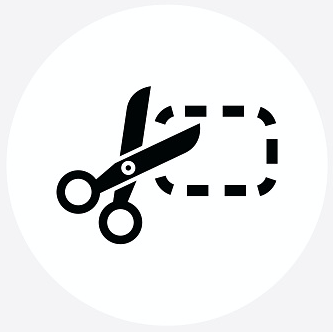Editor’s note: David Florence is CEO of mobile coupon solution firm MobiSave, New York.
 Couponing has been modernized by the emergence of downloadable and mobile savings programs but it’s still primarily a spray and pray operation. Despite the expansion of consumer touchpoints with newer options like load-to-card and phone-based savings apps, CPG marketers remain limited in their ability to tailor coupon offers to individual purchasing behaviors. Few tools have existed to help brands identify heavy category users and single them out with targeted coupons to encourage conversion.
Couponing has been modernized by the emergence of downloadable and mobile savings programs but it’s still primarily a spray and pray operation. Despite the expansion of consumer touchpoints with newer options like load-to-card and phone-based savings apps, CPG marketers remain limited in their ability to tailor coupon offers to individual purchasing behaviors. Few tools have existed to help brands identify heavy category users and single them out with targeted coupons to encourage conversion.
In this largely one-size-fits-all world, three stumbling blocks have stood between CPG brands and personalized couponing. All three are related to poor data availability.
1. Data ownership: Digital-based coupon strategies are almost universally tied to retailers who hold the cards when it comes to sharing information. Whether it’s Petco trying to lure shoppers with e-mail discounts, CVS issuing point-of-sale receipts offering product discounts based on the customer’s past purchases or any number of retailer loyalty apps, that means the in-depth purchasing data needed to create and execute targeted coupon campaigns is not readily available to the CPG manufacturer. Nor is the shopper identity information required to reach target consumers.
2. Retailer-specific programs: E-mail, online and loyalty couponing programs are inevitably retailer-specific. So are most third-party mobile coupon apps, serving up offers that must be redeemed at certain retailers. As a result, any data that these sources may be willing to share with their brand partners is restricted to what each shopper purchases at a particular store. If a consumer patronizes multiple stores – as most do – there has been no way to assemble a complete purchasing profile containing the data necessary for accurate targeting.
3. Quantitative data limitations: While some retailers and third-party providers are able to provide market basket data, it is typically comprised of item sets that illustrate relationships between purchases rather than providing competitive brand and shopper-specific insights. This has little value for CPG marketers interested in using coupon personalization to try to move the needle on household penetration. If Kellogg wants to bring new buyers of its Kashi granola into the fold, for example, the company needs to know who purchases other granola brands to zero in on those specific consumers.
All of these points have prevented marketers from developing smart, one-on-one coupon campaigns that can serve up targeted offers to their most desirable prospects.
A variation on mobile couponing provides cash-back rebates rather than deducting discounts at the cash register. Consumers save their preferred manufacturer rebate offers within the app, snap a picture of their grocery store receipts with their phone or tablet cameras and send the image to the app to claim their rebates.
While some providers in this space still focus on retailer-specific discounts and manually examine receipts to identify items that qualify for rebates, others allow users to shop at any retailer and have developed technology that turns each receipt image into data for automated processing and near-instant rebate redemption.
Since customer receipts give mobile rebate providers access to real-life market baskets, those with the right technology can slice and dice those receipts to equip CPG marketers with the information they need to build strategic, data-driven campaigns.
Here are some of the advantages.
1. Coupon personalization: With the market basket insights of the most advanced mobile rebate apps, CPG marketers can tailor coupon programs to the highest-value users in a given category, create different offers for users with different purchasing behaviors and send those offers directly to target consumers – thanks to the app’s shopper identification abilities.
2. Individual shopping histories: Customer receipts contain a motherlode of data on individual purchasing behavior for each shopping transaction. This makes it possible for mobile rebate apps to pinpoint users in any product category, trace their purchases over time and leverage that data so that you can market directly to your best prospects through the app.
3. Automated market basket analysis: If you work with a provider that is capable of mining the data on customer receipts, you gain the ability to identify heavy and super-heavy category shoppers, what else they purchase, where they buy it and more. If the provider is also retailer-agnostic (enabling users to redeem offers at any store), that information can be aggregated across all retailers to help optimize coupon campaigns.
4. No retailer involvement: Brands can now bypass retailers and work directly with the app provider to create and execute coupon programs. This not only eliminates the complications of dealing with retailers on coupon initiatives, including lack of access to market basket details, but it also simplifies the process of managing campaigns involving multiple retailers by consolidating all program management and reporting under one umbrella.
All digital-based coupon programs have traceability and rapid implementation advantages over traditional paper formats as well as the ability to reach consumers on the mobile devices where they now conduct most of their personal business, but some have failed to raise the stakes by enabling brands to laser-target coupons to their most likely customers. CPG marketers have an opportunity to focus their coupon efforts where they will deliver the highest returns. It’s a new chapter in precision marketing.
